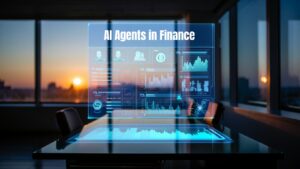Exploring the Potential of Gen AI: Upholding Ethical Practices
In today’s rapidly evolving technological realm, Generative AI (Gen AI) is disrupting how businesses operate. From automating tasks to creating personalized content, Gen AI offers unprecedented potential for companies to improve efficiency, reduce costs, and deliver enhanced customer experiences. However, with great power comes great responsibility. The deployment of AI solutions must be done in a way that ensures ethical integrity, protects data privacy, and adheres to regulatory standards.
This article will explore how implementing a Responsible AI Workbench can help your business build Gen AI solutions ethically, efficiently, and effectively.
I. Understanding Generative AI and Its Business Impact
A. What is Generative AI?
Generative AI refers to a class of artificial intelligence models that can create new content based on the data they’ve been trained on. Unlike traditional AI models that only perform classification or predictive tasks, Gen AI models can generate entirely new text, images, music, or even code.
At the core of Gen AI are advanced neural networks, such as Generative Adversarial Networks (GANs) and Transformer-based architectures like OpenAI’s GPT-4 and DALL·E. These models are designed to recognize patterns in massive datasets, enabling them to produce coherent, contextually relevant, and creative outputs.
B. Business Applications of Gen AI
Generative AI has transformed numerous industries by automating complex tasks and enabling businesses to offer more personalized, innovative services. Some key applications include:
- Content creation and personalization: Gen AI tools like GPT-4 can write articles, generate product descriptions, or create personalized marketing messages at scale.
- Customer service automation: AI-powered chatbots provide efficient and accurate responses to customer queries, reducing the need for human intervention.
- Data analysis and predictive modeling: Gen AI can analyze large datasets to identify trends, forecast future outcomes, and recommend strategic actions.
C. The Potential Risks of Unchecked Gen AI
Despite its potential, Gen AI also comes with inherent risks if left unchecked. Some of the most pressing concerns include:
- Ethical dilemmas and bias: AI systems may reinforce harmful biases if not properly monitored, leading to unfair treatment of certain demographic groups.
- Data privacy concerns: AI models trained on sensitive data can inadvertently expose personal information, leading to privacy violations.
- Regulatory compliance issues: As AI becomes more ingrained in business operations, organizations must navigate a complex landscape of laws and regulations governing AI usage.
II. The Importance of Responsible AI in Business
A. Ethical Considerations
Ethical AI is a crucial component of any responsible AI strategy. Ensuring that AI systems are fair, transparent, and unbiased is key to fostering trust and preventing reputational damage. A responsible AI approach must focus on:
- Ensuring fairness and reducing bias: Implementing algorithms that treat all users fairly, regardless of their race, gender, or background.
- Promoting transparency and explainability: Users should understand how AI decisions are made, especially when those decisions impact their lives.
B. Legal and Regulatory Compliance
With the rise of AI, governments and regulatory bodies around the world have introduced laws to govern its use. Businesses must comply with data protection regulations such as:
- General Data Protection Regulation (GDPR): EU regulation that mandates strict guidelines on data privacy and the rights of individuals.
- California Consumer Privacy Act (CCPA): U.S. law aimed at protecting the data of California residents.
Adhering to these laws is not only a legal requirement but also critical to avoiding fines and building trust with customers.
C. Building Trust with Stakeholders
Responsible AI practices enhance a business’s reputation, fostering greater trust with customers, employees, and investors. By being transparent about how AI models are developed and ensuring their ethical use, companies can:
- Enhance brand reputation: Businesses that prioritize ethics in AI gain a competitive advantage by appealing to socially conscious consumers.
- Improve customer and employee trust: Demonstrating a commitment to responsible AI builds long-term relationships and fosters loyalty.
III. Introducing the Responsible AI Workbench
A. What is a Responsible AI Workbench?
A Responsible AI Workbench is a set of tools, frameworks, and best practices designed to help businesses build, deploy, and monitor AI systems in an ethical and responsible manner. These workbenches enable organizations to ensure that AI models meet regulatory requirements and ethical standards throughout their lifecycle.
Key components of a Responsible AI Workbench include:
- Bias detection and mitigation tools: Identify and eliminate biases in AI models.
- Explainable AI (XAI): Provide transparency in AI decision-making processes.
- Compliance and audit support: Ensure adherence to relevant legal standards and simplify audits.
B. Benefits of a Responsible AI Workbench
Implementing a Responsible AI Workbench offers several advantages for businesses, including:
- Streamlining AI development processes: These tools help teams quickly build and deploy AI models while ensuring they meet ethical standards.
- Facilitating collaboration between teams: The workbench acts as a centralized platform where data scientists, developers, and compliance teams can collaborate.
- Mitigating risks associated with AI deployment: By embedding ethical checks into the development process, businesses can reduce the likelihood of bias or privacy violations.
C. Core Features to Look For
When selecting a Responsible AI Workbench, businesses should prioritize tools that offer the following features:
- Bias detection and mitigation tools: Capabilities that allow teams to assess AI models for inherent biases.
- Explainable AI (XAI) capabilities: Tools that provide insights into how AI models make decisions.
- Compliance and audit support: Features that ensure your AI models meet legal requirements and are easily auditable.
IV. Building Gen AI the Right Way
A. Establishing Ethical Guidelines
To ensure that AI development aligns with corporate values, businesses should:
- Develop a company-wide AI ethics policy: Create guidelines that outline the ethical standards for AI use.
- Set up an AI ethics committee or task force: Establish a cross-functional team responsible for overseeing the ethical implications of AI projects.
B. Integrating Responsible AI into Development
Responsible AI practices should be integrated into the entire AI development lifecycle, from model training to deployment. Some strategies include:
- Incorporating ethical considerations from the outset: Ethical AI should be a priority at the start of any project, not an afterthought.
- Utilizing the workbench for model training and testing: Use bias detection and XAI tools to ensure that models are fair and transparent.
C. Continuous Monitoring and Improvement
AI models must be continuously monitored to maintain their accuracy and ethical integrity. Businesses should:
- Regularly update models and practices: AI systems evolve, and so should the ethical guidelines governing them.
- Gather feedback and learn from real-world deployment: Use feedback from users and stakeholders to refine models and address any issues that arise.
V. Implementing the Responsible AI Workbench in Your Business
A. Assessing Your Current AI Infrastructure
Before adopting a Responsible AI Workbench, businesses should evaluate their existing AI infrastructure:
- Evaluating existing tools and workflows: Assess whether your current AI tools meet ethical and regulatory standards.
- Identifying gaps and areas for improvement: Pinpoint where your AI processes fall short and where a Responsible AI Workbench can add value.
B. Selecting the Right Workbench Solutions
When choosing a Responsible AI Workbench, consider both commercial and open-source options:
- Comparing commercial and open-source options: Assess the pros and cons of various platforms based on cost, scalability, and features.
- Considering scalability and integration capabilities: Ensure that the workbench can integrate with your existing systems and scale with your business needs.
C. Training and Empowering Your Team
To fully leverage the Responsible AI Workbench, it’s essential to equip your team with the necessary skills and knowledge. Businesses should:
- Offer workshops and training sessions: Provide employees with the training needed to use AI tools effectively and ethically.
- Encourage a culture of ethical AI development: Foster an organizational culture that prioritizes responsible AI practices at all levels.
D. Collaborating Across Departments
Implementing responsible AI requires collaboration across multiple departments, including:
- Involving legal, compliance, and HR teams: Ensure that all stakeholders, including legal and HR, are involved in AI decision-making processes.
- Fostering cross-functional communication: Regular communication between data scientists, engineers, and compliance teams is crucial for ethical AI development.
VI. Case Studies: Success Stories with Responsible AI Workbenches
A. Company A: Enhancing Customer Experience
A leading retailer used a Responsible AI Workbench to personalize marketing efforts while respecting customer privacy. By leveraging tools for bias detection and explainable AI, the company successfully created personalized content that resonated with diverse customer segments without violating data privacy laws.
B. Company B: Reducing Bias in Recruitment
A technology firm adopted a Responsible AI Workbench to improve its hiring process. By implementing bias detection tools, the company identified and eliminated biases in its recruitment algorithms, resulting in fairer hiring practices and a more diverse workforce.
C. Lessons Learned
Both companies faced challenges during implementation, such as aligning stakeholders and ensuring model transparency. However, by prioritizing ethical AI practices, they overcame these obstacles and set the stage for long-term success.
VII. The Future of Responsible Gen AI in Business
A. Emerging Trends
The field of responsible AI is evolving, with new trends shaping its future:
- Advances in ethical AI research: Researchers are continually developing new tools to make AI more transparent, fair, and explainable.
- Growing emphasis on sustainability and social responsibility: AI is increasingly being used to solve global challenges, from climate change to social inequality.
B. Preparing for Upcoming Regulations
As AI regulation continues to evolve, businesses must stay ahead of the curve by:
- Anticipating changes in AI governance: Keeping an eye on upcoming laws and regulations.
- Staying ahead with proactive compliance measures: Implementing responsible AI practices before regulations mandate them.
C. The Role of Leadership
To successfully implement responsible AI, leadership must play a central role by:
- Executives championing responsible AI initiatives: C-suite executives should lead the charge in advocating for ethical AI development.
- Investing in ongoing education and resources: Companies must continuously invest in AI ethics training and technology to stay ahead.
Take the Lead in Shaping a Responsible AI Future
Embracing a Responsible AI Workbench is crucial for businesses aiming to leverage Gen AI effectively while upholding ethical standards. By integrating responsible AI practices into your business, you can mitigate risks, ensure regulatory compliance, and unlock AI’s full potential for innovation and growth.
Now is the time to start your journey toward responsible Gen AI development. Explore workbench solutions that align with your business values and objectives, and take the first step toward building a more ethical, trustworthy, and effective AI-driven future.








